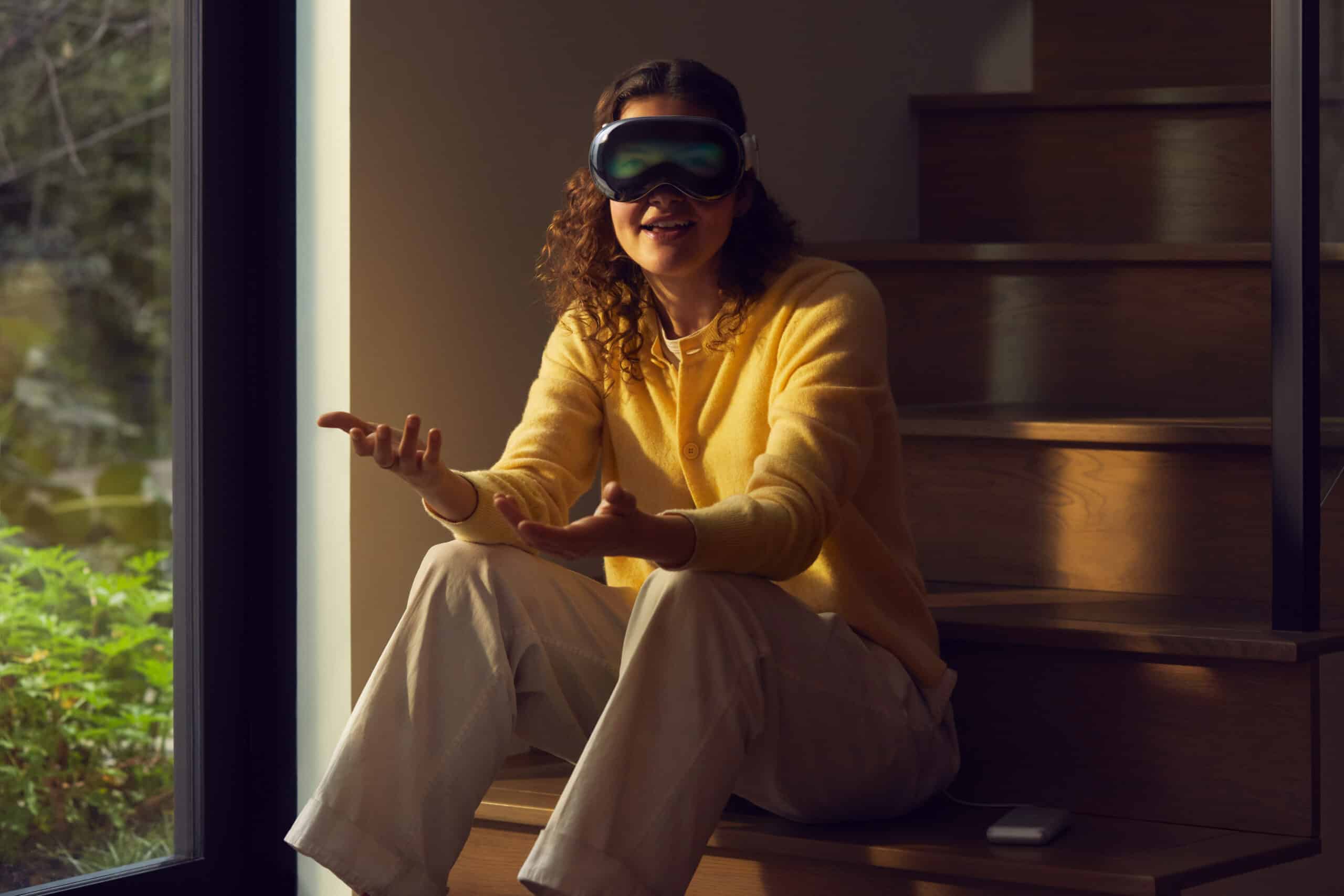Imagine a device that lets you interact with digital content in a way that feels like it is physically present in your space. A device that creates an infinite canvas for your apps, entertainment, photos, videos, and connection. A device that blends seamlessly with your physical world while allowing you to stay present and connected to others. That device is Apple Vision Pro.
Apple Vision Pro is Apple’s first spatial computer. It is a revolutionary product that introduces a new era of computing. Built upon decades of Apple innovation, Vision Pro features a breakthrough design that integrates incredibly advanced technology into an elegant, compact form. It delivers extraordinary new experiences for users and exciting new opportunities for developers.
In this article, we will explore how Apple Vision Pro achieves this feat with its breakthrough design that features an ultra-high-resolution display system, custom Apple silicon, and a unique dual-chip design. We will also see how these features enhance the user experience and enable new possibilities for spatial computing.
The Ultra-High-Resolution Display System
One of the most striking features of Apple Vision Pro is its display system. Vision Pro features a front display that shows the wearer’s eyes, allowing the wearer to make eye contact with others outside of the headset. This creates a more natural and social interaction, unlike other headsets that hide the wearer’s eyes behind opaque lenses.
But the front display is not the only display in Vision Pro. Inside the headset, there are two displays that pack 23 million pixels across each eye, providing more pixels than a 4K TV. These displays deliver stunning clarity, color, and contrast for every pixel, making digital content look incredibly realistic and immersive.
The display system of Vision Pro also features an adaptive refresh rate that adjusts to the content being displayed, ranging from 60Hz to 120Hz. This ensures smooth and responsive visuals while saving battery life. Additionally, the display system features advanced optics that deliver a wide field of view and a natural focus. The optics use liquid crystal lenses that dynamically adjust to the user’s eye movements and the distance of the digital content, creating a comfortable and realistic viewing experience.
The display system of Vision Pro enhances the user experience in many ways. For example, users can watch movies, shows, and games in immersive spatial audio and stunning scale. They can relive memories in 3D with spatial photos and videos captured by Apple Vision Pro’s 3D camera. They can also browse the web, create documents, and multitask with an infinite canvas for apps that scales beyond the boundaries of a traditional display.
The Custom Apple Silicon
Another key feature of Apple Vision Pro is its custom Apple silicon. Vision Pro features a dual-chip design that splits the processing between two chips: one for rendering and one for tracking. This allows Vision Pro to handle complex graphics, audio, video, and machine learning tasks with high performance and low power consumption.
The rendering chip is responsible for generating the visuals and sounds that users see and hear in Vision Pro. It is based on Apple’s A-series chips that power iPhone and iPad, but optimized for spatial computing. It features a powerful CPU, GPU, ISP, and NPU that can handle up to 8K resolution, ray tracing, Dolby Atmos, and more.
The tracking chip is responsible for sensing the user’s environment and inputs in Vision Pro. It is based on Apple’s M-series chips that power Mac and AirPods, but optimized for spatial computing. It features a dedicated CPU, GPU, ISP, NPU, and DSP that can handle eye tracking, hand tracking, voice recognition, spatial mapping, and more.
The rendering chip and the tracking chip work together to create a seamless and responsive spatial computing experience. They are also connected to a neural engine that enables on-device intelligence and personalization for apps and experiences. The neural engine uses machine learning to understand the user’s preferences, context, and behavior, and provide relevant and customized content.
The custom Apple silicon of Vision Pro enhances the user experience in many ways. For example, users can interact with digital content using natural and intuitive inputs like eyes, hands, and voice. They can also explore mixed reality content that adapts to their environment and preferences. Moreover, they can access Siri, Face ID, iCloud, and other Apple services seamlessly and securely.
The Unique Dual-Chip Design
A third feature of Apple Vision Pro is its unique dual-chip design. Vision Pro integrates hardware and software in a way that enables a standalone spatial computer in a wearable form factor. It does so by distributing the heat and weight of the device between two components: the headset and the external battery.
The headset contains the display system, the tracking chip, the neural engine, and other sensors and components. It is designed to be lightweight and elegant, with an enclosure made of three-dimensionally formed laminated glass that flows into an aluminum alloy frame. The headset also features a light seal that gently flexes to conform to the user’s face, blocking out stray light and ensuring a precise fit.
The external battery contains the rendering chip and other components that generate more heat and consume more power. It is designed to be compact and portable, with a magnetic connector that attaches to the headset or a cable. The external battery supports up to two hours of use on a single charge, and all-day use when plugged in.
The dual-chip design of Vision Pro enhances the user experience in many ways. For example, users can wear a lightweight and comfortable device that fits snugly on their head without compromising performance or functionality. They can also enjoy a seamless transition between digital content and physical reality without distractions or interruptions. Furthermore, they can connect with other devices like iPhone, iPad, Mac, or Apple TV wirelessly or via cable.
Apple Vision Pro is a revolutionary spatial computer with a breakthrough design that features an ultra-high-resolution display system, custom Apple silicon, and a unique dual-chip design. It delivers extraordinary new experiences for users and exciting new opportunities for developers.
With Vision Pro, Apple has once again redefined the future of computing. Vision Pro is not just a device, but a platform for spatial computing that will enable new forms of creativity, productivity, entertainment, and connection.

